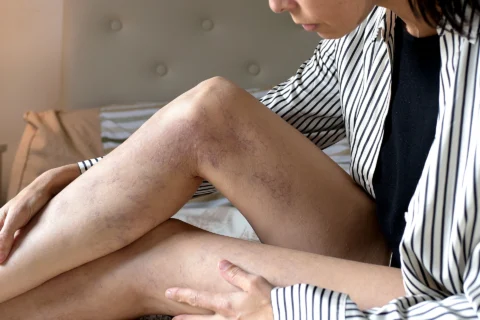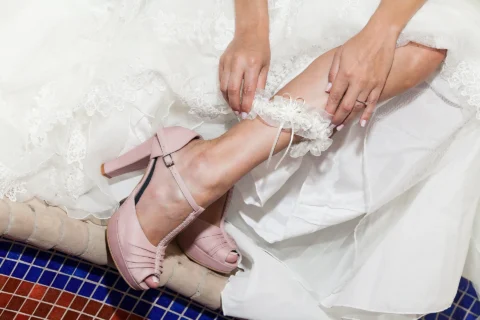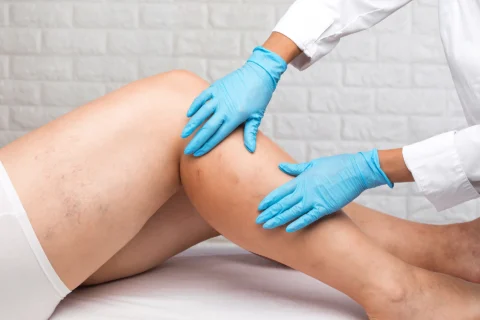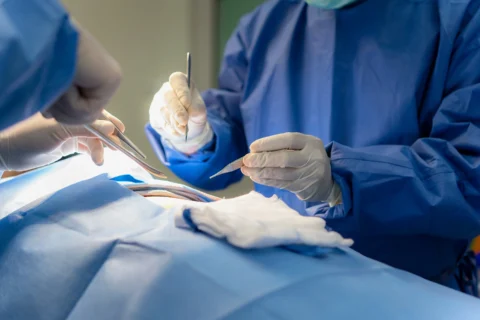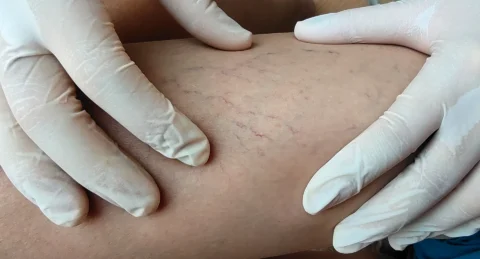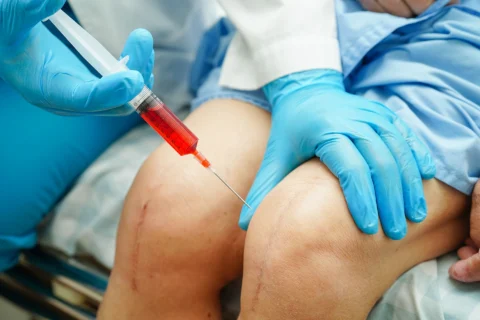Varicose veins are a type of problematic visible veins that develop on the skin, along with spider veins and reticular veins. Aside from its appearance being an eyesore, enlarged vein problems may also be accompanied by symptoms of pain and discomfort which can affect the quality of life. The good news is that there are available varicose vein treatment procedures that can remove them from good.
So what are the options for surgically treating varicose veins? There are two surgical approaches for varicose vein removal: vein ligation and stripping, and phlebectomy. Ligation involves making incisions on the skin to access the damaged vein and tying them off. It is often done together with vein stripping where the ligated vein is removed. Meanwhile, phlebectomy is a treatment where the diseased vein is pulled out of the affected area.
How to Know If You Need Varicose Vein Surgery
The great saphenous vein is the longest superficial vein in the body and it stretches along the top of the foot, lower leg, thighs, and groin. It has a group of vein valves that work to pump blood from the lower body back to the heart.
Damaged vein valves may interfere with the normal blood flow to the heart and cause the blood to reverse its circulation and pool inside the blood vessel. The backward flow of the blood, also known as venous reflux or chronic venous insufficiency, may create pressure in the veins. This can cause the vein wall to stretch and bulge to the surface of the skin, resulting in varicose veins.
Varicose veins typically appear as lumpy, raised, twisted veins that are blue or purple. Small varicose veins are usually a cosmetic concern for most people, but sometimes, the build-up of excess pressure in the leg veins may cause symptomatic varicose veins and cause uncomfortable symptoms like:
- Leg fatigue and heaviness
- Leg swelling or soreness
- Muscle cramps
- Skin discoloration
- Aching and burning leg pain
- Dryness and itching of the skin surrounding the damaged vein
The pain from varicose veins may be easily remedied at home. But when you let these varicose vein symptoms go unchecked for a long time, they may start to interfere with your activities and develop into serious complications such as venous ulcer, deep vein thrombosis, and pulmonary embolism.
Severe cases of varicose veins may need immediate medical intervention or vein surgery. But before that, a vascular specialist may conduct exams to check for any blood vessel conditions and figure out the extent of the varicose veins. They may also perform a Doppler ultrasound to check the blood flow over the affected area and see if there is a blood clot.
What Are the Common Surgical Procedures For Varicose Vein Treatment?
A patient with smaller varicose veins is often advised to make lifestyle changes and wear compression stockings to improve its symptoms and prevent them from worsening. Intervention with vein surgery is usually only needed when you experience extreme vein pain, bleeding, and skin sores. Phlebectomy and vein ligation and stripping are the common surgical approaches for a varicose vein procedure.
| Vein Ligation and Stripping | Phlebectomy | |
| Procedure | A vein surgeon will make an incision to tie the affected vein before taking them out of the leg | Using a small phlebectomy hook, the surgeon will pull out the veins through several incisions on the skin |
| Side Effects | Both procedures may come with side effects such as bleeding, pain, infections, swelling, numbness, anesthesia drawbacks, and scarring of the skin. Adverse effects like serious nerve damage and thrombosis rarely happen. | |
| Expected Results | You may expect permanent removal of the visible varicose vein. However, it is still possible to develop new varicose veins especially if you are at high risk for vein conditions. | |
| Cost | Vein ligation and stripping may cost between $1,500 to $3,000. | A phlebectomy may cost around $2,000 to $5,000 |
Vein Ligation and Stripping
In medical procedures, a ligation means surgically closing off a blood vessel using a ligature or clip. When referring to vein treatment, ligation involves tying the veins to stop the flow of the blood in the damaged veins. Meanwhile, vein stripping refers to the surgical removal of the veins from the legs. Stripping is usually needed in cases when the patient is suffering from venous insufficiency or leg ulcers.
This treatment can take anywhere from 60 minutes to 90 minutes. And since it’s an invasive procedure, patients who undergo this kind of surgery are usually sedated under general anesthesia. There will be two cuts in the skin: one incision at the top of the leg near the groin and another incision behind the knee or ankle.
At the first incision site, the surgeon will skillfully locate and reach the vein and surgically ligate them using a tie or clamp. A long, thin wire will then be connected through the treated vein and it will be pulled until it exits the body from the second incision place. After the veins are removed, the cuts will be stitched or covered to let them heal.
This usually doesn’t require a hospital stay and patients can go home after the surgery. However, your doctor may wrap your treated leg with bandages and require you to wear compression stockings after the procedure. It may take up to 4 weeks to recover from the surgery and during that time, you may be prescribed pain relief medications to alleviate the post-op discomfort.
Learn more: How to Relieve Pain from Varicose Veins
Phlebectomy
Phlebectomy, also known as stab phlebectomy or ambulatory phlebectomy, is a straightforward procedure that removes varicose veins. This procedure may also require putting the patient under anesthesia to lessen the pain. But unlike vein ligation and stripping, a phlebectomy has lesser incisions and stitches on the treatment area.
The treatment begins by applying a local anesthetic over the area where a varicose vein will be treated. The doctor will then make a small cut on the skin where they will insert a tool or small hook that will be used to remove the veins that are closest to the skin’s surface. When the veins affect the entire leg, the incision and removal will start from the ankle moving upwards.
The whole procedure can take 30 minutes up to 1 hour. Recovery may also take at least 2 to 4 weeks and you may be advised to wear graduated compression stockings to compress the treated area and promote blood flow to healthier veins.
What Are The Side Effects Of The Procedures?
Both operations require you to be under anesthesia so you will not feel any pain during the procedure itself. But after the veins have been treated and removed, you may start to experience side effects of the anesthesia such as temporary dizziness, breathing problems, nausea, and vomiting.
General risks of vein surgery can also include bleeding, possible skin infection, bruising, numbness, swelling, scarring, and blood clots. Nerve injury and damage and deep vein thrombosis are possible complications but it very rarely happens. When you look for a doctor, be sure that they are experts in performing the procedure to minimize the adverse risks.
Reminders To Help You Recover From The Vein Treatment
To make the recovery process as smooth as possible, you need to follow the aftercare instructions from your vascular surgeon. Here are some reminders to ensure you get the best outcome with minimal risks after the surgery:
- Keep the bandages and compression stockings on the treated leg until the doctor advises to remove them. Make sure that the bandages and stitches are also dry so you may need to avoid showers for a few days.
- Elevate your legs to stimulate proper blood circulation to the heart and relieve the pressure in your veins.
- You can also put an ice pack or cold compress in the treated area to minimize the pain and swelling.
- Light walking for a few minutes every day after the surgery can also help speed your healing and recovery. Once the bandages and compression socks are removed, you may return to your regular exercise routines to improve blood flow and tone your leg muscles.
- You may also need to make certain changes to your diet and consume foods that are high in fiber and bioflavonoids to keep your veins healthy.
Minimally Invasive Procedure Options for Varicose Veins
Varicose veins can also be treated with less invasive treatments such as endovenous laser treatment, radiofrequency ablation, sclerotherapy injections, and medical adhesive. Most procedures can get rid of the varicose veins for good, while using medical adhesive can keep the veins closed for at least three to five years. Read on the table below to know more about the nonsurgical vein treatment alternatives:
| Endovenous ablation | Radiofrequency ablation | Sclerotherapy | Medical Adhesive | |
| Procedure | Endovenous laser ablation is a catheter-assisted treatment where laser energy is delivered intravenously to heat and diminish the diseased vein | Radiofrequency vein ablation is also done using a catheter where radiofrequency energy is used to destroy the varicose veins. | This involves injections of chemical solutions to close off the veins. An alternative to chemical injections is foam sclerotherapy where foam will replace the blood in the veins and eventually cause it to shrink and break down. | This treatment also requires inserting a catheter into the veins and placing an adhesive or glue, usually VenaSeal, to seal off the damaged veins. |
| Side Effects | Patients may experience pain and discomfort during and after the procedure, swelling, bruising, scarring, redness, and skin discoloration. | Common side effects include bruising, swelling, redness, and pain at the injection site. It’s also possible to have allergic reactions to the injections so you should disclose any important health information with your provider. | It’s common to have mild to moderate pain, numbness, and swelling. | |
| Onset of results | Patients can typically see improvements in their varicose veins within one to two weeks. | Results from the injections may be visible within 3 to 6 weeks. | It may take a week for the adhesive to take effect and completely block | |
| Cost | The cost for endovenous laser or radiofrequency ablation may range from $3,000 to $5,000. | It may average around $500 to $750. | May cost around $3,000 to $3,500. |
Get Effective Treatments for Varicose Veins at Vein Center Doctor
Varicose veins may be efficiently removed via surgical and nonsurgical vein procedures. But before deciding on a treatment, you should first consult with a vein specialist who will help pinpoint the underlying cause of your vein condition and create a customized plan that will meet your needs.
Led by board-certified Dr. Rahul Sood, Vein Center Doctor is a premier clinic that specializes in holistic vein care and treatments. Our staff is composed of trained vein specialists who can perform safe and effective vein procedures. Book an appointment with us now to bring back your vein-free skin.


